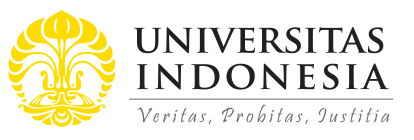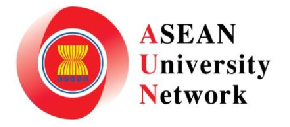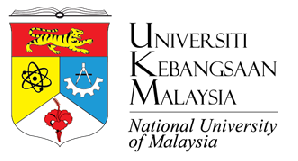
Abstract
Based on WHO data, Indonesia has the third largest leprosy burden in the world, afterIndia and Brazil. Although leprosy was declared to be eliminated in severalprovinces, there are still several leprosy settlements spread in Indonesia. Oneof these settlements is Neglasari village in Tangerang City, West Java, whereleprosy patients have been living since 1981. There is a scarcity ofinformation regarding the features of leprosy in Indonesia, especially aboutthe description of the patients’ posttreatment condition in terms of bothclinical sequelae and health services provided. A collaboration betweenmultiple departments of Ophthalmology, Dermatovenereology, and MedicalRehabilitation from the Cipto Mangunkusumo Hospital/Universitas Indonesia,Jakarta, was established in the form of a health service program to determinethe number and features of disabilities of ex-leprosy patients. We providehealth services, including physical examinations, extend free medication andeye glasses, and impart knowledge about the chronic complications to patientsand local cadres. A nonroutine health service program for leprosy patients wasconducted in Neglasari village, which performed four primary activities ofpromotive, preventive, curative, and rehabilitative. The program included atotal of 260 patients, with a mean age of 50.45 ± 10.15 years and most of thembeing males (60.4%). A duration of >5 years of leprosy was found in 47% ofsubjects, and 96% of them have been released from treatment. Disabilitiescomprised 52.5% in the eye, 87.7% in the hand, and 92% in the foot. In total,65% of the patients had an uncorrected visual acuity of normal to mildimpairment, whereas 5.8% were blind. Eye abnormalities included madarosis(43.9%), entropion (41%), cataract (26%), corneal hypoesthesia (20.6%),trichiasis (17.8%), and lagophthalmos (15.1%), and examination of theextremities revealed that 16% of the subjects had an amputated foot. Spectacleswere successfully distributed to 100% of patients who were visually correctable.This proposed model for leprosy health care program involving multidisciplinaryexpertise is effective for screening numerous disabilities in leprosy patientsat one time. This enables caretakers to determine a holistic management that atthe end is intended to improve the quality of life of patients.
References
Courtright, P, Daniel, E, Sundarrao, Ravanes, J & Mengistu, F. (2002). Eye disease in multibacillary leprosy patients at the time of their leprosy diagnosis: findings from the Longitudinal Study of Ocular Leprosy (LOSOL) in India, Philippines and Ethiopia. Lepr Rev, vol. 73, pp. 225-238.
Ebenezer D. (2016). Ocular Leprosy. In: Kumar B, Kar HK, editors. IAL Textbook of Leprosy 2nd ed. New Delhi: Jaypee Brothers Medical Publishers; p. 370-93.
Fitness, J, Tosh, K & Hill, A. (2002) Genetic susceptibility to leprosy. Genes Immun, vol. 3, pp. 441-453.
Grzybowsi A, Malgorzata N, Virmond M. (2015). Ocular leprosy. Clin Dermatol, vol. 33, pp. 79-89.
Hogeweg, M. (2010). Leprosy and the eye teaching set. pp. 1-41. International Centre for Eye Health, London.
Kemenkes. (2012). Tata Laksana Program Kusta di Indonesia. Kementerian Kesehatan RI, Jakarta.
Kemenkes. (2016). Pedoman Nasional Program Pengendalian Penyakit Kusta. Kementrian Kesehatan RI Direktorat Jendral Pengendalian Penyakit dan Penyehatan Lingkungan Jakarta.
Kemenkes. (2017). Profil Kesehatan Indonesia Tahun 2016, in D Budijanto, Yudianto, B Hardhana & TA Soenardi, (eds), pp. 166-169.
Kementrian Kesehatan RI, Jakarta. Kemenkes. (2018). Hapuskan Stigma dan Diskriminasi terhadap Kusta. Kementrian Kesehatan RI, Jakarta.
Lewallen S, Courtright P. Ocular involvement in leprosy. (2012). In: Nunzi E, Massone C, editors. Leprosy a practical guide: Springer-Verlag;p. 247-54.
Naaz F, Mohanty PS, Bansal AK, Kumar D, Gupta UD. (2017). Challenges beyond elimination in leprosy. Int J Mycobacteriol, vol. 6, pp.222-228.
Rathinam, SR. (2010). Leprosy uveitis in the developing world. Int Ophthalmol Clin, vol. 50, pp. 99-111.
RS Kusta Dr. Sitanala. (2018) Hospital by Laws Rumah Sakit Kusta Dr. Sitanala Tangerang 2018.p. 1.
Susanto T, Dewi EI, Rahmawati I. (2017). The experiences of people affected by leprosy who participated in self-care groups in the community: A qualitative study in Indonesia. Lepr Rev, vol. 88, pp543-553.
Tabah EN, Nsagha DS, Bissek AZ, Njamnshi TN, Njih IN, Pluschke G, Njamnshi AK. (2018). Community knowledge, perceptions and attitudes regarding leprosy in rural Cameroon: The case of Ekondotitiand Mbonge health districts in the South-west Region. PLoS Negl Trop Dis, vol. 12, p. e0006233.
WHO. (2016). Global Leprosy Strategy 2016-2020, World Health Organization, from: http://apps.searo.who.int/PDS_DOCS/B5233.pdf?ua=1. [January 2017].
WHO. (2016). Global Leprosy Strategy 2016-2020, World Health Organization, from: http://www.searo.who.int/srilanka/areas/leprosy/global_leprosy_strategy_2016_2020.pdf
WHO. (2018). WHO to publish first official guidelines on leprosy diagnosis, treatment and prevention, from: http://www.who.int/neglected_diseases/news/WHO-to-publish-first-guidelines-on-leprosy-diagnosis/en/. [June 2018].
WHO. (2018). Leprosy. Available from: http://www.who.int/news-room/fact-sheets/detail/leprosy. [February 2018].
Wisnu, IM, Sjamsoe-Daili, ES & Menaldi, SL. (2016). Kusta, in SL Menaldi, K Bramono & W Indriatmi, (eds), Ilmu Penyakit Kulit dan Kelamin, 7th edn, pp. 87-102. Badan Penerbit Fakultas Kedokteran Universitas Indonesia, Jakarta.
WHO. (2018). WHO to publish first official guidelines on leprosy diagnosis, treatment and prevention, from: http://www.who.int/neglected_diseases/news/WHO-to-publish-first-guidelines-on-leprosy-diagnosis/en/. [June 2018].
WHO. (2018). Leprosy. Available from: http://www.who.int/news-room/fact-sheets/detail/leprosy. [February 2018].
Wisnu, IM, Sjamsoe-Daili, ES & Menaldi, SL. (2016). Kusta, in SL Menaldi, K Bramono & W Indriatmi, (eds), Ilmu Penyakit Kulit dan Kelamin, 7th edn, pp. 87-102. Badan Penerbit Fakultas Kedokteran Universitas Indonesia, Jakarta.
Recommended Citation
Irawati, Yunia; Lestari, Yeni Dwi; Bani, Anna Puspitasari; Menaldi, Sri Linuwih; Wahyuni, Luh Karunia; and Kurniawardhani, Dewinta Retno
(2018).
Health care service for leprosy patients in Sitanala Tangerang (A proposed approach of comprehensive health care for Leprosy patient).
ASEAN Journal of Community Engagement, 2(2).
Available at: https://doi.org/10.7454/ajce.v2i2.142







